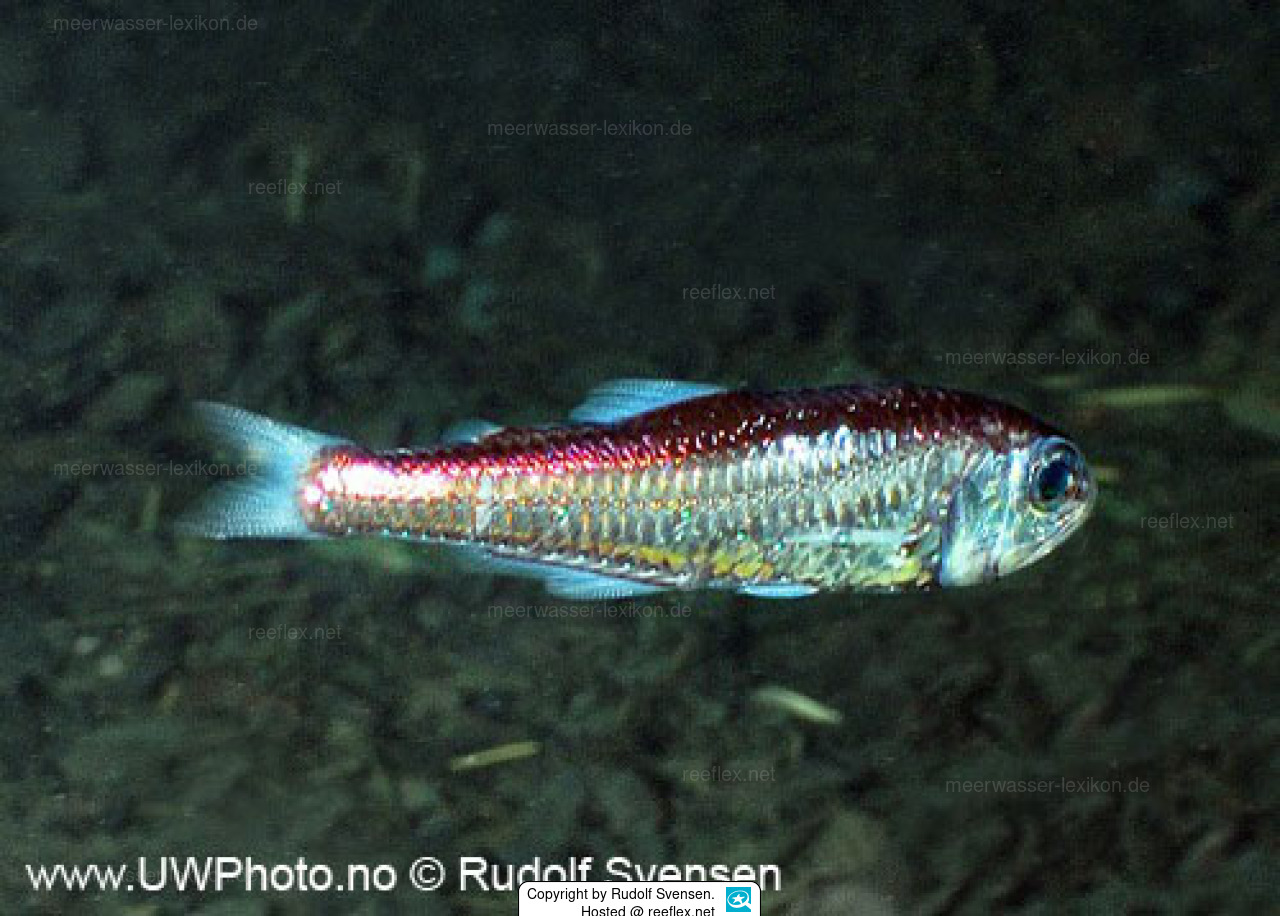Info
The Ruhr University Bochum aptly calls the luminescent fish “the fireflies among the fish”!
Benthosema glaciale is nocturnal and extremely shy of light, the lanternfish lives in the eastern Atlantic oceanic and mesopelagic.
The oceanodromous ice lanternfish, which feeds at night from deeper to shallower zones up to the surface to hunt zooplankton.
The average life expectancy of this species is around eight years.
In the Mediterranean, this species is found between 550 and 1,100 m depth in the eastern Ionian Sea.
It can be found between 375 and 800 m during the day and between 10 and 200 m at night.
The preflexion larvae feed mainly on copepod eggs and nauplii, while the postflexion larvae feed on calanoid copepods.
Lanternfish are an important food source for squid, other deep-sea fish, large pelagic fish such as tuna and sharks, seabirds, penguins, whales and dolphins!
All species, with the exception of Taaningichthys paurolychnus, have blue, green or yellow light-emitting luminous organs in rows along the body and on the head. In the genus Diaphus, for example, there are spotlight-like luminous organs near the eyes.
The glow, a bioluminescence, is made possible by bacteria that live as symbionts in the luminous organs and can occur up to 90 times per minute.
By rotating the luminescent organs, Benthosema glaciale produces flashing patterns with different frequencies.
Luminescent fish can produce flashing signals
Synonyms:
Benthosema glacialis (Reinhardt, 1837) · unaccepted (misspelling)
Benthosoma glaciale (Reinhardt, 1837) · unaccepted > misspelling - incorrect subsequent spelling
Lampanyctus glacialis (Reinhardt, 1837) · unaccepted
Myctophum glaciale (Reinhardt, 1837) · unaccepted
Myctophum glaciale knipovitschi Soldatov, 1939 · unaccepted
Myctophum glaciale thori Tåning, 1918 · unaccepted
Myctophum glacialis (Reinhardt, 1837) · unaccepted (misspelling)
Scopelus glacialis Reinhardt, 1837 · unaccepted
Scopelus parvimanus Günther, 1864 · unaccepted
Scopelus scoticus Günther, 1889 · unaccepted
Benthosema glaciale is nocturnal and extremely shy of light, the lanternfish lives in the eastern Atlantic oceanic and mesopelagic.
The oceanodromous ice lanternfish, which feeds at night from deeper to shallower zones up to the surface to hunt zooplankton.
The average life expectancy of this species is around eight years.
In the Mediterranean, this species is found between 550 and 1,100 m depth in the eastern Ionian Sea.
It can be found between 375 and 800 m during the day and between 10 and 200 m at night.
The preflexion larvae feed mainly on copepod eggs and nauplii, while the postflexion larvae feed on calanoid copepods.
Lanternfish are an important food source for squid, other deep-sea fish, large pelagic fish such as tuna and sharks, seabirds, penguins, whales and dolphins!
All species, with the exception of Taaningichthys paurolychnus, have blue, green or yellow light-emitting luminous organs in rows along the body and on the head. In the genus Diaphus, for example, there are spotlight-like luminous organs near the eyes.
The glow, a bioluminescence, is made possible by bacteria that live as symbionts in the luminous organs and can occur up to 90 times per minute.
By rotating the luminescent organs, Benthosema glaciale produces flashing patterns with different frequencies.
Luminescent fish can produce flashing signals
Synonyms:
Benthosema glacialis (Reinhardt, 1837) · unaccepted (misspelling)
Benthosoma glaciale (Reinhardt, 1837) · unaccepted > misspelling - incorrect subsequent spelling
Lampanyctus glacialis (Reinhardt, 1837) · unaccepted
Myctophum glaciale (Reinhardt, 1837) · unaccepted
Myctophum glaciale knipovitschi Soldatov, 1939 · unaccepted
Myctophum glaciale thori Tåning, 1918 · unaccepted
Myctophum glacialis (Reinhardt, 1837) · unaccepted (misspelling)
Scopelus glacialis Reinhardt, 1837 · unaccepted
Scopelus parvimanus Günther, 1864 · unaccepted
Scopelus scoticus Günther, 1889 · unaccepted







 Rudolf Svensen, Norwegen
Rudolf Svensen, Norwegen



